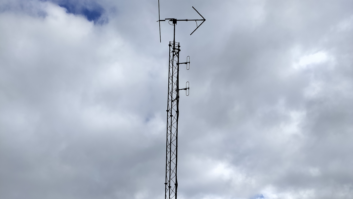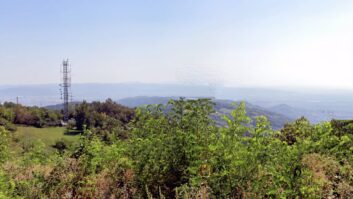Early next year, Norway becomes the first country to start switching off FM transmissions in favor of terrestrial digital broadcasting via DAB+.
Think of Norway, and you think of breathtaking countryside, wincingly expensive beer and large amounts of water. Fjords and beautiful coastlines are part of what Norway is famous for � it has25,148 kmof coastline, making it the eighth largest coastline in the world � just beating the US�s paltry 19,924 km. Canada tops the league at 202,080 km.
Norway has a large fishing industry, and they, like everyone else, listen to the radio. Radio reception can be a matter of ensuring the safety of the crew: few small fishing boats have internet access, and pubcaster NRK produces a weather radio station, NRK V�r, specifically made for those who work at sea. Any switchoff of FM transmissions needs to consider all radio users � even those in fishing boats off the coast.

Throughout the Norwegian summer, with temperatures hitting a balmy 50 Fahrenheit, three NRK engineers packed a variety of radio monitoring equipment, and a few portable DAB+ sets, and took to the waves.
�We wanted to see the how far from shore it’s possible to receive signals, and the quality of them: DAB reception offshore is not an official requirement for us, but we wanted to offer it anyway,� NRK�s Head of Distribution �yvind Vasaasen told me via email. �We also wanted to test various receivers, and to test antenna solutions on boats.�
As long as a transmitter is well situated and not shaded by buildings or mountains, a transmitted signal should travel quite far: though the curved surface of the Earth will eventually stop reception at 190-240MHz, the frequencies being used for DAB. �We can’t find evidence that fog or rain have any practical negative effects on the reception,� Vasaasen told me, further highlighting the reliability of a good radio broadcast.

Gunnar Garfors (shown at left in photo at right), J�rn Jensen (shown in top photo) and Michel Gascoin (shown on the floor), who are all advisors to NRK Distribution, ran a set of tests from a number of different locations off the Norwegian coast � in a variety of search and rescue boats piloted by the Redningsselskapet sea rescue group.
�We had a Rhode Schwartz frequency analyzer,� Jensen told me via email. �We had four car adapters with different antennas, the output of which was recorded on a PC so we could replay later. At the same time we could listen to all four sources: two on speakers and two on headphones.�
As ever with digital reception, the quality of the antenna made all the difference – an antenna made for cars didn�t perform that well, nor did a split FM/DAB antenna. However, a specific marine antenna, made for DAB reception, performed excellently.

�The reception was even better than our calculations predicted,� said Vasaasen. �Our aim is to offer DAB reception 50km (30 miles) from the shore, and with the external, marine antenna this was always possible within this range corresponding to the coverage map and even much further.�
The hero, though, was a small, battery-powered consumer DAB+ radio with a telescopic antenna. In a trip from the working port and tourist town of �lesund, theSony XDR-P1DBPreceived signals a staggering 132km (82 miles) from land.
One further discovery? Radio engineers don�t always cope well with bad weather. Seasickness isn�t fun at the best of times: but two of these trips, which lasted four and a half hours, were very stormy indeed.
However, for everyone working on what�s inevitably been dubbed �fmexit,� this was welcome validation of the coverage plan and reception characteristics of Norwegian�s DAB+ transmission network.
On Jan. 11 at 11:11 a.m., the first of many FM transmitters will go silent in Norway, appropriately in the coastal town of Bod�. Radio-loving Norwegians should relax, safe in the knowledge that even if they�re out fishing, they�ll still be able to tune in.












